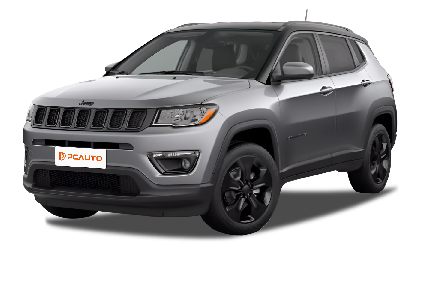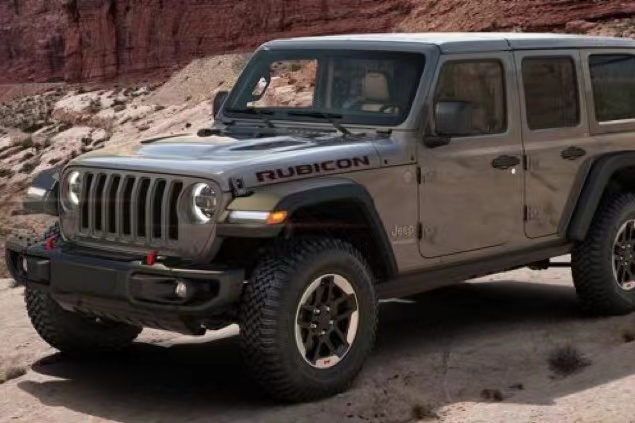Q
Is the Jeep Compass a good choice?
The Jeep Compass is a good choice for vehicle purchasing, positioned as a compact SUV with an official price of RM 248,889. In terms of space, it measures 4,404mm in length with a 2,634mm wheelbase, offering a relatively spacious interior. The 51L fuel tank ensures sufficient range, while the 458L trunk capacity meets the needs for daily loading.
For performance, the 2.4L naturally aspirated engine delivers a maximum of 172PS, paired with an AT transmission and all-wheel drive for smooth power delivery across various road conditions. Safety features include standard ABS, electronic stability control, and six airbags, providing reliable protection for occupants.
In comfort, the manually adjustable front seats, foldable rear seats, and single-zone automatic climate control enhance the riding experience. Additional practical features include a multifunction steering wheel and a touchscreen infotainment system. Overall, the Jeep Compass can meet the needs for daily commuting and family transportation.
Special Disclaimer: This content is published by users and does not represent the views or position of PCauto.
Related Q&A
Q
Is the Jeep Compass engine powerful?
The Jeep Compass 2.4 Limited (2014) is equipped with a 2.4L naturally aspirated inline-four engine that delivers 172 horsepower at 6000 rpm and a peak torque of 224 Nm at 4400 rpm. Whether an engine is powerful enough depends on individual needs and expectations. For urban commuting and light off-road driving, this engine provides adequate power for smooth acceleration and overtaking. It is paired with an automatic transmission and an all-wheel drive system, ensuring stable performance across various road conditions. However, if you seek high-performance driving with rapid acceleration and high top speeds, this engine may not meet those expectations. Overall, it strikes a good balance between daily usability and light adventure capabilities.
Q
What is the maximum range of the Jeep Compass?
The Jeep Compass 2.4 Limited (2014) has a fuel tank capacity of 51 liters. However, its maximum range depends on various factors such as driving habits, road conditions, and vehicle load. With a 51-liter fuel tank, under ideal conditions with efficient driving, it can achieve a long range, but the actual range often varies. For example, if the vehicle averages around 10 liters per 100 kilometers (this is just an estimate as actual consumption may differ), it could travel approximately 510 kilometers on a full tank. Regular maintenance like proper tire inflation, timely oil changes, and efficient engine tuning can also improve fuel efficiency and increase the maximum range. Keep in mind these are approximations and the actual maximum range may fluctuate.
Q
How much does it cost to fill up Jeep Compass?
The Jeep Compass has a fuel tank capacity of 51 liters. However, the actual cost to fill it up depends on current fuel prices. Gasoline prices fluctuate - taking standard RON 95 as an example, if its price is RM 2.20 per liter, a full tank would cost approximately RM 112.20. For RON 97 priced at RM 2.50 per liter, filling the tank would require RM 127.50.
Fuel consumption varies significantly based on driving habits and road conditions. Proper driving habits and favorable road conditions can improve fuel efficiency, reducing refueling frequency and costs. Conversely, aggressive driving and challenging terrain increase fuel consumption, leading to higher refueling expenses.
Q
Does Jeep Compass have a spacious room?
The room of Jeep Compass is spacious. With a length of 4404mm, width of 1760mm, height of 1656mm and wheelbase of 2634mm, it provides an ample space inside. The five-seat layout means there's enough room for a small family. The front seats offer manual adjustability for the driver and passenger, and the passenger seat has features like tumble-fold and heating. The rear seats can be split 60:40, which not only gives flexibility for seating arrangements but also allows for more cargo space when needed. The trunk has a volume of 458L, which is sufficient for daily groceries or a couple of suitcases for a short trip. Also, features like a single sunroof increases the sense of spaciousness and airiness inside the vehicle, making the Jeep Compass a good choice for those seeking a vehicle with adequate space.
Q
Is the Jeep Compass SUV or XUV?
The Jeep Compass is a compact SUV that has the typical features of an SUV. It has elevated ground clearance that enables it to easily handle challenging terrains with better passability than conventional sedans. Its interior offers adequate space, providing ample room for both passengers and cargo to meet the consumers' needs for daily commutes and family travel.
In design, it carries forward Jeep's iconic DNA with the classic seven-slot grille paired with distinctive headlights, complemented by muscular body lines. For the hood, it offers a range of powertrain options including gasoline engines, as well as electrified variants like mild-hybrid, plug-in hybrid, and all-electric versions to cater to consumers'diverse preferences.
Some models are equipped with an intelligent 4WD system, delivering off-road performance—all of which align with authentic SUV traits rather than the XUV.
Q
What type of vehicle is the Jeep Compass?
The Jeep Compass is a compact SUV that belongs to the Jeep family. With a body length of 4,404mm, width of 1,760mm, height of 1,656mm, and a wheelbase of 2,634mm, its dimensions secure its position in the compact SUV segment. For the hood, it once offered a 2.4L naturally aspirated engine version producing 172PS maximum horsepower, sufficient for daily driving needs.
In terms of features, the vehicle is equipped with numerous practical and comfort-oriented configurations. In safety, it includes six standard airbags, electronic stability control, hill start assist, etc. The front seats offer manual adjustment, supporting heating functionality, while the rear seats feature a 60:40 split-folding capability for flexible cargo space expansion. Additionally, the multifunction steering wheel and 6.5-inch touchscreen infotainment system further enhance the driving experience.
With these characteristics, the Jeep Compass is suitable for both daily commutes and outdoor adventures, which is a good choice for consumers.
Q
How far can an empty-fuel Jeep Compass travel?
It's difficult to determine exactly how far an empty-fuel Jeep Compass can travel, as this depends on various factors like driving style, road conditions, and vehicle load. The 2014 Jeep Compass 2.4 Limited has a 51-liter fuel tank, with actual fuel consumption varying between drivers - typically ranging from 11 to 15 liters per 100 kilometers.
Assuming approximately 10 liters of fuel remain when the warning light activates (this is a rough estimate and varies by vehicle), at a consumption rate of 12 liters per 100 km, the theoretical remaining range would be around 80 kilometers. However, this is only an estimate. In practice, to avoid potential fuel pump overheating damage because of insufficient cooling, which may even cause the breakdown of vehicle, it's strongly recommended to refuel the vehicle as soon as possible after the warning light illuminates.
Q
Which country does Jeep Compass come from?
The Jeep Compass is an American brand. Jeep is an automotive brand with a profound historical heritage and is affiliated with Chrysler Corporation in the United States. This brand is renowned worldwide for producing off-road vehicles with outstanding performance. As a member of the Jeep family, the Jeep Compass inherits the brand's unique features. It combines classic design with modern technology, featuring iconic exterior elements of the Jeep brand such as the seven-slot grille and a series of advanced configurations, such as the available Freedom Drive active full-time 4WD system, which enhances its on-road stability and off-road capability. In Malaysia, many consumers favor the Jeep Compass, as it offers unique and distinctive options for local SUV buyers.
Q
What is the fuel capacity of Jeep Compass?
The fuel capacity of the Jeep Compass is 51 liters, which helps improve the driving range. The fuel tank capacity refers to the volume from the bottom of the fuel tank to the safe fill level. In actual refueling, it may exceed the calibrated value because there is still space from the safe fill level to the fuel tank opening, which is to prevent fuel overflow due to thermal expansion. This vehicle runs on gasoline, and its fuel consumption per 100 kilometers fluctuates within a certain range. Understanding the fuel capacity is important for trip planning. For example, before a long-distance trip, check the remaining fuel level and plan refueling stops in advance. During daily use, it is also recommended to monitor the remaining fuel level through the vehicle's fuel gauge and refuel the vehicle promptly when the level is low to avoid travel disruption due to fuel depletion.
Q
Is Jeep Compass the full-size car?
Jeep Compass is not the full size car. It is a compact SUV, categorized into the C-Segment. With a length of 4404mm (for the 2014 model) and a wheelbase of 2634mm, its dimensions make it a compact vehicle. Full size cars or SUVs typically have larger dimensions, offering more spacious interior, especially in terms of passenger room and cargo capacity. However, over the years, the Compass has undergone upgrades. The newer versions have increased in size, with a length reaching 4550mm and an extended wheelbase of 2795mm, which also boosts the cargo space to 550L. This evolution makes it more spacious than before, yet still within the category of compact vehicle.
Popular Cars
Model Year
Car Compare
Car Photo
Latest Q&A
Q
Is the 2022 Golf R a good daily driver?
The 2022 Golf R makes for a brilliant daily driver. Packing a punch with its 2.0-liter turbocharged engine pumping out 320 horsepower, it delivers power smoothly and responsively through a 7-speed dual-clutch transmission—perfect for both city commutes and highway runs. The suspension strikes a sweet spot between comfort and sportiness, soaking up bumps without breaking a sweat.
Inside, you’ll find a well-crafted cabin with a digital cockpit and plenty of tech, including adaptive cruise and lane-keeping assist, which add real-world convenience and safety. Despite its compact footprint, the interior is smartly packaged, offering decent headroom and legroom front and rear. The trunk’s also practical enough for grocery runs or weekend getaways.
Fuel economy sits around 8-9L/100km combined—reasonable for this performance tier. Maintenance isn’t a headache either, thanks to solid parts availability and a widespread service network.
If you want driving thrills without sacrificing everyday usability, the Golf R nails the balance. Sure, there are other hot hatches in the segment (some Japanese and European rivals come to mind), but the R stands out for its all-around competence.
Q
How much horsepower does the 2022 Golf R have?
The 2022 Golf R packs a 2.0-liter turbocharged four-cylinder engine that delivers 315 horsepower and 420 Nm of torque. Paired with a 7-speed dual-clutch transmission and 4MOTION all-wheel drive, it rockets from 0-100 km/h in just 4.7 seconds – seriously quick for a hot hatch.
What sets the Golf R apart isn’t just raw power. It comes with adaptive chassis control and multiple drive modes, tweaking the suspension and power delivery to suit different roads. Whether you’re commuting or carving corners, it strikes a great balance between daily comfort and sporty handling.
As one of the top performers in the hot hatch segment, the Golf R nails the mix of practicality and driver engagement. If you’re cross-shopping, rivals like the 306-hp Mercedes-AMG A 35 or the 296-hp Audi S3 are worth a look, but the Golf R holds its own with strong overall performance and value.
Q
How much is the 2022 Golf R?
The 2022 Golf R carries an official price tag of approximately RM300,000 to RM350,000 in the local market, though final figures may vary depending on optional extras, dealer incentives, or regional factors. This hot hatch packs a 2.0L turbocharged four-cylinder pushing 315 horsepower and 420Nm of torque, paired with a 7-speed DSG and 4Motion all-wheel drive – good for a 4.7s sprint to 100km/h.
Over the standard Golf, the R variant gets serious upgrades: sport-tuned suspension, high-performance brakes, and aggressive exterior styling. Inside, you'll find Nappa leather sport seats and the latest digital cockpit. While it competes with rivals like the Honda Civic Type R and Mercedes-AMG A45, the Golf R strikes a better balance between daily usability and track-ready performance.
Word to the wise: budget extra for insurance and maintenance packages, and stick with 98-octane fuel for optimal performance. If you're eyeing the used market, expect one-year-old examples to go for about 15% below new-car pricing – just be sure to check for aftermarket mods and warranty status before signing.
Q
What is the top speed of a 2020 Z4?
The top speed of the 2020 BMW Z4 varies by model. The sDrive20i, powered by a 2.0-liter turbocharged four-cylinder, tops out at 240 km/h, while the high-performance M40i variant—with its 3.0-liter inline-six turbo—hits the electronic limiter at 250 km/h. As a driver-focused roadster, the Z4 delivers solid high-speed stability thanks to its tuned powertrain and lightweight construction. The rear-wheel-drive setup and sharp steering also make it seriously nimble.
Word to the wise: If you’re driving one of these in hot, humid conditions, keep a close eye on tire health and stick to the maintenance schedule—heat and moisture can push cooling systems and rubber components to their limits. Some owners opt for aftermarket tuning to bypass the speed limiter, but that’s a gamble with warranty and insurance implications.
Q
How much is a 2020 BMW Z4 worth now?
Based on current used car market trends, a 2020 BMW Z4 is valued between RM250k to RM350k depending on factors like condition, mileage, trim level, and service history. The entry-level sDrive20i tends to be more affordable, while the high-spec M40i variant holds its value better thanks to its 3.0L turbocharged straight-six engine and sportier tuning.
This soft-top roadster offers agile handling and a tech-forward cabin - its iDrive system and wireless Apple CarPlay still feel competitive today. Options like the M Sport package or advanced driver aids can further boost resale value.
Worth noting: The Z4 shares its platform with the Toyota Supra but targets a more luxury-oriented buyer. Niche sports cars like this typically depreciate faster than mainstream models. Before buying, always check the vehicle's maintenance records through authorized used car programs and thoroughly inspect the convertible mechanism. For price reference, it's wise to compare with rival models like the Porsche 718 Boxster or Mercedes SLC from the same year.
View More



















Pros
Cons